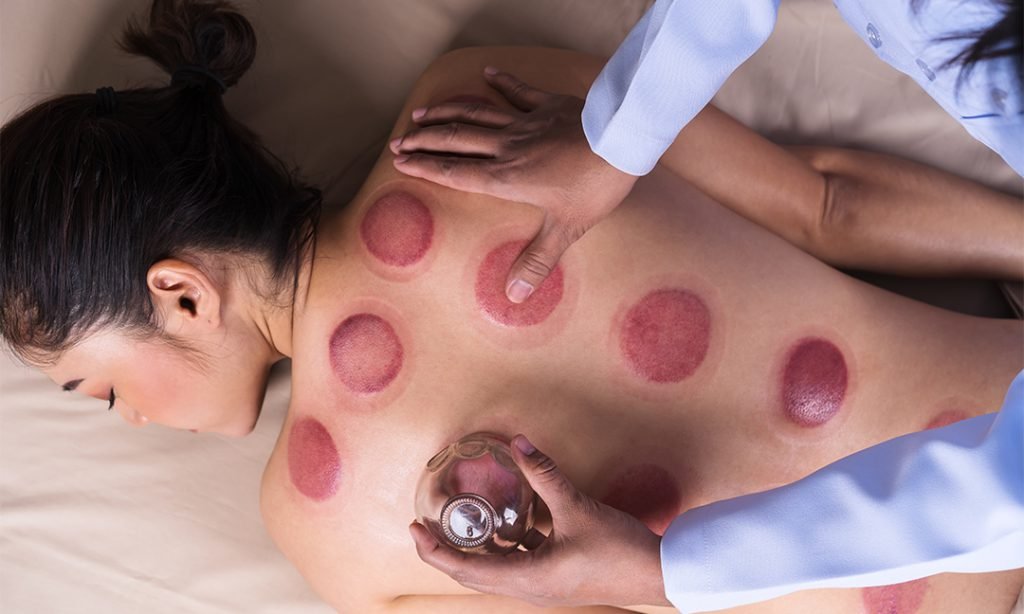Cupping therapy session may leave painless marks from pulling up the stagnant blood, we call it “discolouration”, commonly mistaken for bruises. Cupping should NOT cause bruises, which are caused by trauma, blood leaks into the surrounding tissue and as a result can be painful. Cupping marks “discolouration” should not hurt.
The discolouration may be red or even black depending on how much stagnation the patient has have. Your cupping marks may be instant or develop over the first 24rhs. After 3 days they start to disappear and should be gone after a weeks. Just know that while the marks are there, your body is working on that area and its surrounds to make it better, so you are getting a treatment the entire time.
Those unfamiliar to Cupping Therapy, believe the Cupping marks to be bruises. However, vacuum formed by Cupping draws up the old non-circulating stagnant blood and sticky fluids from the area, bringing them up to the surface and away from the injury so that healthy free circulation can be restored to the affected area, thus creating space for oxygen, living cells and nutrients for faster recovery. There is no compression in correctly performed suction cup therapy. Where there is dead, static blood, lymph, cellular debris, pathogenic factors, and toxins present in the body, Cupping can leave marks, which indicates that the stagnation or disease has been moved from the deeper tissue layers to the surface.
The colour and pattern of the marks depend on the level of stagnation in the area, and range from a bright red to dark purple, usually lasting 3 days to a week – sometimes longer if the person is very sick or sedentary. If there is no stagnation present, there will be only pink marking.
If the patient receiving treatment sweats a lot on a daily basis – no marks may ever occur. People, who live/work/play in toxic environments, or were exposed to a heavy dose of toxic material) may consistently mark. Sites where there is old trauma or injury may require multiple Cupping treatments to remove all stagnation. You will find in follow up treatments the marks will be progressively lighter as the pathogens are systemically removed from the body.

Often, when a condition exists within deeper structures where sufficient pathological factors and stagnant fluids (toxins, blood and lymph) are dredged up during treatment, discolouration will appear on the epidermis. As treatments cumulate and the release of stagnation and build-up has been released, dispersed and drained (sometimes quickly as the 2nd treatment) no discolouration is likely to occur at all – even though each time the cupping may have been focused on the same area, for the same duration, and with the same amount of suction. This action is the result of having internal unwanted toxins systemically expelled.

